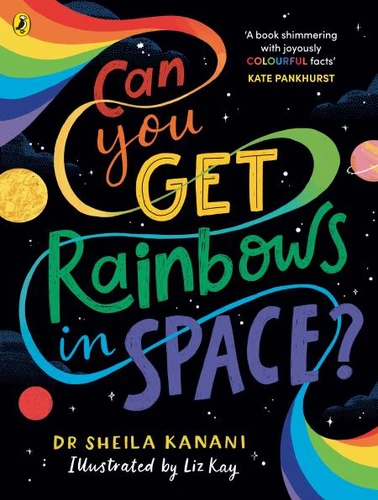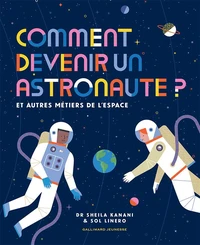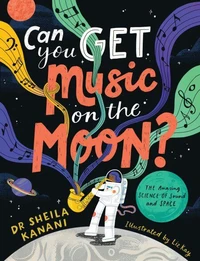Can You Get Rainbows in Space?. A Colourful Compendium of Space and Science
Par :Formats :
Disponible dans votre compte client Decitre ou Furet du Nord dès validation de votre commande. Le format Epub fixed layout protégé est :
- Compatible avec une lecture sur My Vivlio (smartphone, tablette, ordinateur)
- Compatible avec une lecture sur liseuses Vivlio
- Pour les liseuses autres que Vivlio, vous devez utiliser le logiciel Adobe Digital Edition. Non compatible avec la lecture sur les liseuses Kindle, Remarkable et Sony
- Non compatible avec un achat hors France métropolitaine
 , qui est-ce ?
, qui est-ce ?Notre partenaire de plateforme de lecture numérique où vous retrouverez l'ensemble de vos ebooks gratuitement
Pour en savoir plus sur nos ebooks, consultez notre aide en ligne ici
- Nombre de pages128
- FormatEpub fixed layout
- ISBN978-0-241-51974-5
- EAN9780241519745
- Date de parution23/03/2023
- Protection num.Adobe DRM
- Infos supplémentairesepub
- ÉditeurPuffin
Résumé
Why is blood red? Why are carrots orange? Who invented the lightbulb? Why is the world 'going green'? Is the sky really blue? And what is ultraviolet light?You'll discover the answers to these questions - and many more - in this incredible collection of scientific facts about colour. We'll talk about light (the most important thing) and waves (not the kind you see at the beach - though you will learn why the sea looks blue!).
You'll find out how some animals are able to glow in the dark and how others change their colours to hide from predators. Keep reading to discover why leaves change colour in the autumn, why your veins look blue but your blood is red, and how the language we use shapes the colours we see .
You'll find out how some animals are able to glow in the dark and how others change their colours to hide from predators. Keep reading to discover why leaves change colour in the autumn, why your veins look blue but your blood is red, and how the language we use shapes the colours we see .
Why is blood red? Why are carrots orange? Who invented the lightbulb? Why is the world 'going green'? Is the sky really blue? And what is ultraviolet light?You'll discover the answers to these questions - and many more - in this incredible collection of scientific facts about colour. We'll talk about light (the most important thing) and waves (not the kind you see at the beach - though you will learn why the sea looks blue!).
You'll find out how some animals are able to glow in the dark and how others change their colours to hide from predators. Keep reading to discover why leaves change colour in the autumn, why your veins look blue but your blood is red, and how the language we use shapes the colours we see .
You'll find out how some animals are able to glow in the dark and how others change their colours to hide from predators. Keep reading to discover why leaves change colour in the autumn, why your veins look blue but your blood is red, and how the language we use shapes the colours we see .










